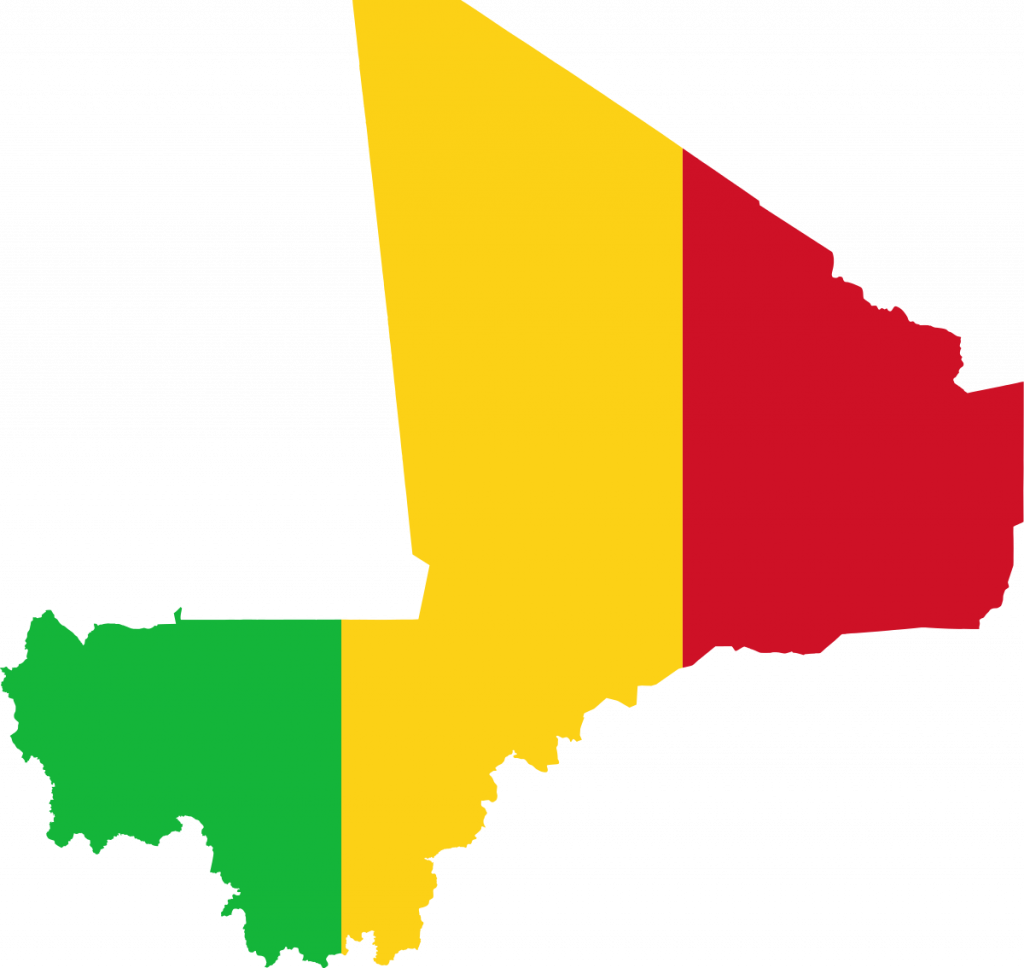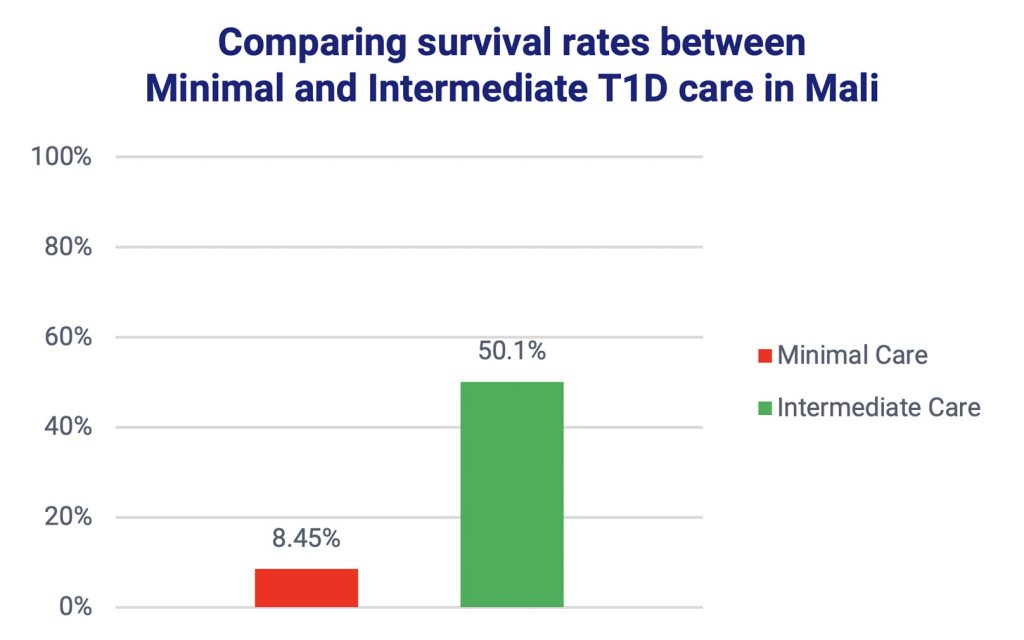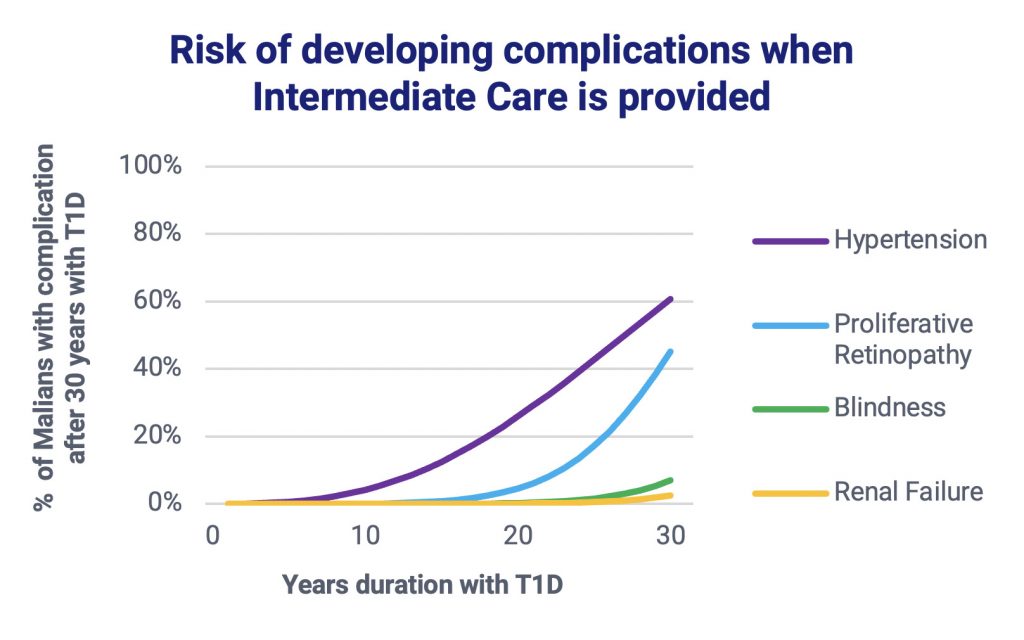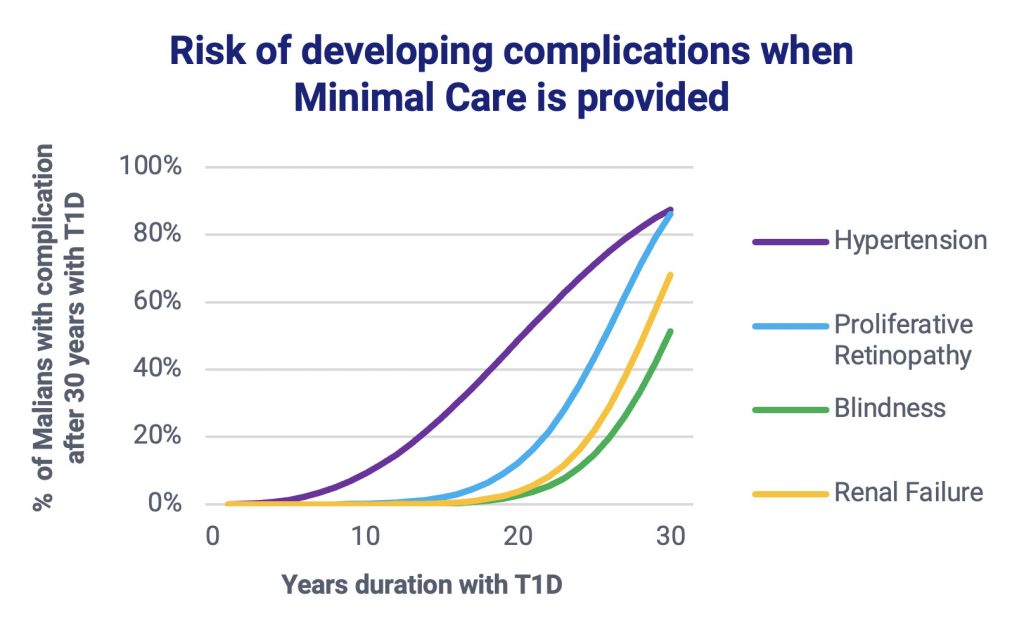Increasing Provision of Type 1 Diabetes Care
A Call to Action for Children and Young People in Mali
The challenge of Type 1 Diabetes
Type 1 diabetes (T1D), an autoimmune disorder, is typically diagnosed in young people. Daily insulin injections are required for survival. People with T1D need access to insulin, home blood glucose monitoring, diabetes education & skilled medical care.
Many under-resourced health systems cannot provide sufficient access to these essential medications and tools.
People with T1D face severe risks of dying quickly, remaining chronically unwell, or developing devastating complications without access to these.
Currently, T1D incidence in Mali is <25 years per 100,000 is 0.74*. T1D prevalence is 2.90 per 100,000*

Young Malians with T1D require:
Insulin
- Human insulin
- Multiple daily injections (basal bolus regimen)
Blood glucose monitoring
- 2-3 tests per day
Mean HbA1c
- 8 – 9.5%
Complications screening
- Weight
- Height
- Blood pressure
- Eye checks
- Feet checks
- Urinary albumin
- Creatinine
- Lipids
- Treatment for complications
- Access to glucagon
Education
- Age appropriate
- T1D care delivered by trained health professionals
- Diabetes camps
- Peer & school support
- 24-hour emergency call service
Mortality & complications
- Infrequent mortality
- Serious long-term complications are rare
Young Malians lives can be saved and improved through cost-effective T1D interventions
- Providing an ‘intermediate’ level of T1D care is cost-effective compared to minimal care in Mali1.
- Intermediate levels of T1D care will also make Malians healthier. Intermediate levels of T1D care can help them avoid early morbidity and mortality as the graphs below show:
When intermediate care is provided, a 500% increase in survival rates can be expected for young Malians with T1D
When intermediate care is provided, the onset of diabetes complications (e.g., kidney failure, blindness) are significantly reduced.
Further, thirty year costs per individual for ‘intermediate’ care requires a lower upfront cost than minimal care ($35,067 v $22,939 USD).
A Healthy Life Year for ‘intermediate’ T1D care per person [as a percentage of Mali’s GDP] is 141% (compared to 492% for minimal care).
This is a cost-effective intervention according to the WHO CHOICE methodology.

The way forward is securing Universal Health Coverage
- The Malian Public Health System has made much progress in providing components of T1D care, yet the costs of these are not covered.
- People with T1D have to pay out of pocket for human insulin, syringes, lancets, blood glucose meters and test strips, HbA1c tests, and standard medical reviews.
- The Public Health System does not provide analogue insulin (modern insulin), retinopathy services, or dialysis.
- Private health insurance programs (AMO, RAMED) do cover a proportion of the costs for human insulin, blood glucose meters and test strips, syringes, HbA1c tests, and standard medical reviews, but only a small percentage of the population is covered under these.
- The majority of people with T1D have to pay out of pocket for their care, but too many cannot sustainably afford the medications and care they need to manage their chronic disease.
- All components of care need to be provided to young people with T1D at reasonable costs.
Ensuring availability and acessibility is key
Accessibility and Availability
- Diabetes services, complications screening, and other aspects of care are rarely available at the community level, and so many young people with T1D struggle to access basic health care due to long travel times, high travel costs, or financial burden.
- Availability of diabetes services is much more stable in the capital city, than in other regions of Mali. Availability of insulin is a particular problem.
Psychosocial
- In addition to developing premature morbidity and mortality, young people with T1D also face challenges in finishing school, finding employment, getting married, and having safe pregnancies when they cannot access care.
Progress made
In 2007, only 14 young people with diabetes were known to be alive in the country. The NGO Santé Diabète commenced support, assisted with insulin and blood glucose test supplies from the Life for a Child Program.
Now there are over 1,000 young people alive with diabetes, and the government is doing more to help.
Remaining challenges
Blood glucose monitoring tools are not provided by the health system.
Young people with T1D must purchase these tools out of pocket. They are unaffordable for almost all people with T1D and their families, and as a result are not commonly used even though this tool improves health outcomes.
Need for health care professionals to continue to be trained in pediatric diabetes.
Calls to Action
We call on the Malian Government to:
- Continue to provide affordable, accessible, and available insulin within the public health system.
- Replicate coverage of insulin for blood glucose test strips. Young people with T1D should receive three strips per day.
- Combat low levels of availability and accessibility for insulin in non-capital regions of Mali through forecasting, refining data flows between different levels (health centers -> regional stores -> central pharmacy) of the supply of essential medicines (including insulin), and management of the cold chain (insulin, strips, etc.)

